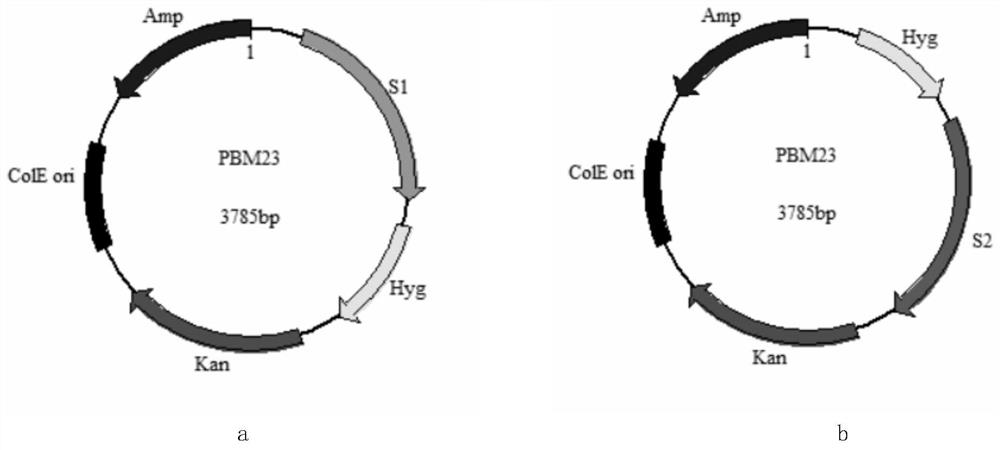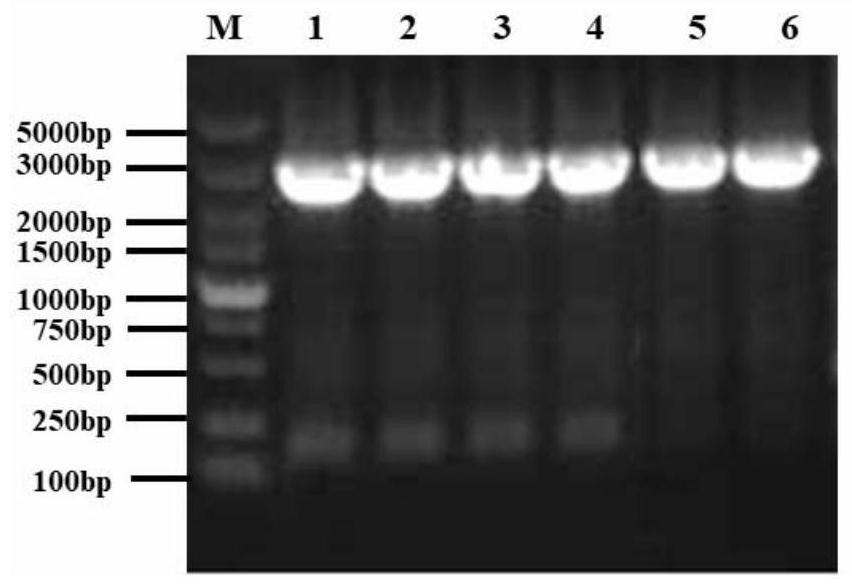Application of mad1 protein in regulation of fungal sporulation and germination and plant linolenic acid metabolism pathway
A technology of fungi and plants, applied in the fields of application, fungi, plant genetic improvement, etc., can solve unknown problems
- Summary
- Abstract
- Description
- Claims
- Application Information
AI Technical Summary
Problems solved by technology
Method used
Image
Examples
Embodiment 1
[0073] Example 1, Construction of Mad1 knockout strain (Δmad1) and determination of its biological characteristics
[0074] 1. Construction of Mad1 knockout strain (Δmad1)
[0075] 1. Construction of target carrier
[0076] 1) Obtaining hyg sequence and homologous sequence S1, S2
[0077] Using the plasmid pKH-KO as a template and hyg-F / hyg-R as primers, the hygromycin hyg sequence (1406bp in size) was amplified. Genomic DNA of Metarhizium anisopliae Ma9-41 was extracted as a template, and S1-F / S1-R and S2-F / S2-R were used as primers to amplify the upstream and downstream homologous sequences of the mad1 gene with a length of 1092bp and 1014bp respectively (S1, S2). The electrophoresis detection results of hyg sequence and homologous sequence S1, S2 are as follows figure 1 shown.
[0078] 2) Obtaining S1-hyg vector
[0079] The mad1 homologous forearm S1 and the hygromycin resistance selection gene hyg were respectively connected to the cloning vector PBM23 to obtain the...
PUM
 Login to View More
Login to View More Abstract
Description
Claims
Application Information
 Login to View More
Login to View More - R&D
- Intellectual Property
- Life Sciences
- Materials
- Tech Scout
- Unparalleled Data Quality
- Higher Quality Content
- 60% Fewer Hallucinations
Browse by: Latest US Patents, China's latest patents, Technical Efficacy Thesaurus, Application Domain, Technology Topic, Popular Technical Reports.
© 2025 PatSnap. All rights reserved.Legal|Privacy policy|Modern Slavery Act Transparency Statement|Sitemap|About US| Contact US: help@patsnap.com



